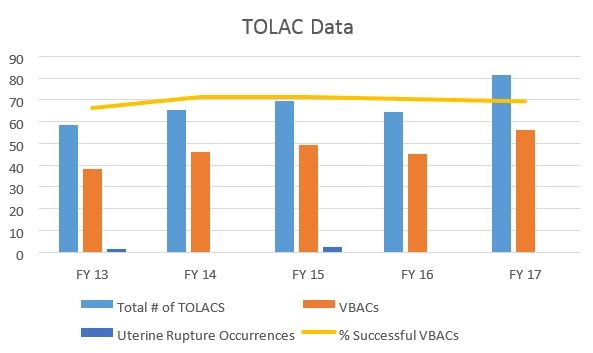Salem Health WCS helped 241 women avoid repeat C-sections
17 Sep 2017By: Matt Boles, MD, and Lisa Ketchum, RN, Women and Children's Services Director
In 2012, Salem Health Women and Children’s Services responded to a community request to offer pregnant women who had previous caesarean section deliveries the option of considering a trial of labor after caesarean.
Since then, 337 women have attempted a TOLAC and 241 of them went on to have a vaginal birth after a previous C-section VBAC, resulting in a 72 percent VBAC success rate.
Many factors led to our success. First and foremost is the collaborative effort among Nursing, Anesthesia, Obstetricians, Education, and the Executive Leadership Council. Representatives from each of these teams developed TOLAC guidelines which ensured patient safety and quality care was the primary focus, with staff and provider training and simulation reinforcing this focus.
The outcome has been a successful program with a low uterine rupture rate of 0.9 percent, with appropriate and timely response when these occurred. (The American College of Obstetricians and Gynecologists 2010 Practice Bulletin on VBAC Delivery reports a uterine rupture risk of 0.7-1.8 percentdepending on number of previous cesarean deliveries.)
Earlier this year, representatives from Anesthesia (Drs. Deb Pederson, Angie Anderson, Matt Boles), Obstetrics (Drs. Mike Chau, John Hannig, Cheryl Lugenbill), and OR and WCS Nursing Leadership (Deni Hoover, Irina Hyde, Jennifer Henkel, Lisa Ketchum) met to evaluate the TOLAC policy, guidelines, and outcomes. They recognized an opportunity to redefine the interpretation of an “immediately available anesthesiologist.” The guidelines have been updated so that TOLAC emergencies are responded to in the same manner as other OB emergencies. The changes are summarized in the TOLAC Standard Work and Emergency Backup Coverage Plan.
